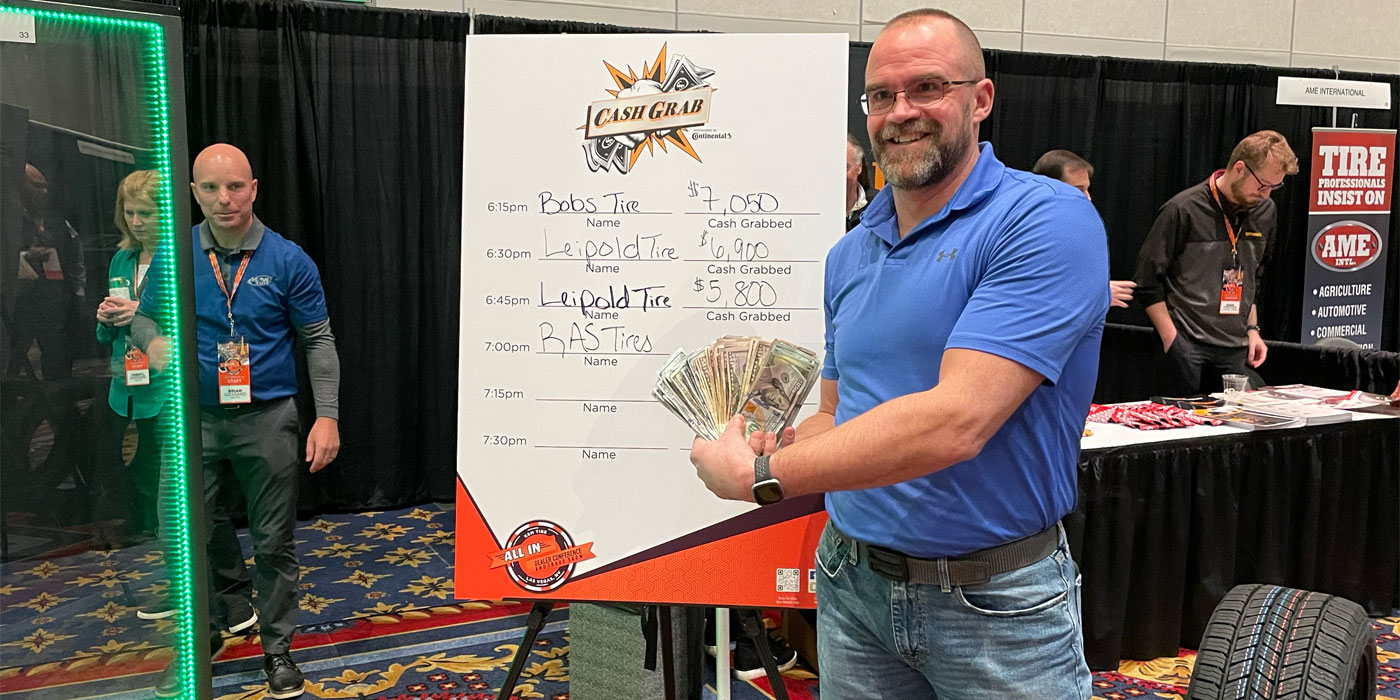Negotiation is an everyday part of life, and by adhering to these six concepts, you’ll win more times than you’ll lose when you face off with insurance adjusters.
We see negotiations every day in every collision repair facility. Frequently, they go something like this:
“Bill, you’ve got six hours on that quarter panel. I can’t pay more than three.”
“Howard, three is nuts! I won’t take less than five-and-a-half.”
“Bill, I said three. Take it or leave it.”
“Howard, I said five-and-a-half. If you can’t do that, take the car.”
That negotiation process is referred to as “positional” negotiation. Each side defines their position, and they’ll defend that position even if the end result is not in anyone’s best interest. But there’s a much better way!
Lifelong Return
Everyone is involved in negotiations. We negotiate with everyone about everything, every day. From dinner choices to how much we pay for a car or house, negotiation is a cradle-to-grave activity.
In the collision repair industry, negotiations occur constantly. We negotiate with adjusters, suppliers, employees, bankers and landlords. Since we’re constantly involved in negotiations, improving negotiation skills provides an immediate and lifelong return.
Negotiation skills can be learned and improved. Learning improved negotiation skills allows us to use those skills everywhere, every day. The same skills used to improve negotiations with an adjuster will also work when negotiating a DRP contract, employee compensation, buying a car or even where you plan to have dinner!
A “Real” Negotiation
To illustrate winning negotiation concepts, we’ll be visiting Bill’s Auto Body. Bill is negotiating for repairs to a customer’s six-year-old Honda with Howard, the insurance adjuster, in a “conventional” insurance situation. Howard has found a used door for the damaged Honda. We’ll sit in as Bill and Howard negotiate the used door.
The concepts illustrated in this fictional setting are negotiation basics that can be used anywhere, anytime, with anyone! The negotiation techniques used by Bill are called “principled” negotiations. As opposed to “positional” negotiations, Bill will try to separate the people from the negotiation, focus on interests instead of positions, search for multiple options and use objective criteria to resolve differences.
Concept #1: Be Prepared
Great negotiators don’t just walk into a negotiation – they prepare for it.
First, Bill generated his own damage evaluation, even though he knows Howard will probably write his own. Bill’s damage evaluation is complete, listing every operation, part, nut, bolt, clip and all materials required to properly repair the damaged vehicle.
Since Bill knows he’ll be negotiating the repairs to an older Honda, used parts will probably factor into the negotiation. He has reviewed the appropriate P-pages, I-CAR and OEM repair techniques, and has pulled copies of included and not included operations when used parts are installed. He has completely reviewed his damage evaluation and can immediately provide documentation to support each line.
Concept #2: Practice
To prepare for his negotiation with Howard, Bill practiced the negotiation with Mike, his lead estimator. They role-played the negotiation with Mike playing the adjuster. This eliminates any surprises in the real negotiation and provides Bill with different negotiation strategies that may be used during actual negotiations.
Great negotiators know the value of practice! Practice negotiations whenever possible. To improve estimators’ negotiation skills, conduct regular practice sessions using different scenarios. Sports teams practice before games, and so should we!
Concept #3: Negotiate the Negotiation
We join Bill and Howard as they begin to discuss the repairs to the Honda.
Bill says, “Howard, before we go over this, let’s agree to some ground rules. Let’s agree that we’re going to repair this vehicle using industry-approved techniques. When we look at individual operations, we’ll ask, ‘Is this operation required to properly repair the vehicle?’ If the answer is yes, then we’ll ask, ‘Is this operation included in the P-pages that we’re using?’ If the answer is no, then we’ll negotiate appropriate compensation for those non-included but required operations and materials.”
Howard nods in agreement: “Yes, Bill. That’s fair.”
Bill continues, “If we have a disagreement, we agree to use industry-accepted resources to arrive at an agreement. So we’ll follow OEM and I-CAR procedures and we’ll use the P-pages to determine if an operation is or is not included. We can use the DEG website to referee any remaining issues. Fair enough?”
“Sure, Bill. I’m good with it. Let’s go.”
Setting the ground rules is frequently a good idea. This avoids conflict later on by establishing a process to resolve any differences before entering the primary negotiation.
Howard reviewed Bill’s damage evaluation as he inspected the damaged Honda. We join Bill and Howard as they begin to discuss the necessary replacement of the door:
“Bill, my estimating system located a used door at Perfect Part Auto Recyclers for $300. I’m going to mark that up 20%.
Concept #4: Focus on Interests, Not a Position, and Look for Multiple Options
In a positional negotiation, both sides would now focus on their positions and the argument would begin. Instead, Bill is not going to “draw a line in the sand.” He’s going to suggest options and ask for Howard’s input.
“Howard, like I said, I will do everything I can to give you what you want, but I can’t lose money. I don’t have a problem with the used door, especially on a six-year-old car. But I can’t lose money doing it. So, we have a couple of options. Could you simply add the $125 I would make on the new door to the price of the used door? Instead of putting it on the estimate for $360, let’s put it down for $425. You’re still $75 better off than OEM.”
“Bill, I just can’t do that. I have to follow guidelines. Our company policy is to mark these parts up 20%."
“Howard, I understand that you have to work within the guidelines. How about marking the used door up 33% ? At least I will make a 25% profit on it. Let’s sell it for $399. Can you meet me in the middle?”
“No way, Bill.”
“Howard, is it the money? What is your real interest? I want to work with you. Can you suggest a solution? One that doesn’t include my eating $65!”
“Bill, if I pay a 33% markup on a used part, the markup will show up in audit and I’ll get grief. It’s not the money. I just can’t deal with the grief. Tell you what I can do. Let’s list the door for $400. I’ll do what I have to do on my end to justify that and avoid getting caught in an audit.”
“Thanks, Howard, I can go along with the price. Let me make the changes on my estimate and we’ll look that over.”
Howard voiced his true interest as avoiding getting caught in an audit, not the money for the part, and offered an acceptable solution that satisfied his interest in avoiding audit issues and Bill’s need for an acceptable profit on the door.
Concept #5: Don’t Get Emotional
So Bill went back into his estimating system and changed the door to a used door with a list price of $400. He also added the non-included P-page operations required to properly install the used door. He hands the updated estimate to Howard, who is not happy!
“Bill, what’s this? What is a ‘recyclable’ door? And look at all of these little operations? What do you mean ‘transfer’ this and that? Repair panel to OEM standard? Feather, fill and block? Man, you’re nickel and diming me to death! Bill, I worked with you on the price of the door, but this stuff is pure crap! I should just call the customer and pull this job! You’re the only one trying to do this to me!”
“Howard, let’s take a break. Remember that we agreed to repair the car by industry standards and use the P-pages when we have questions? Let’s have a cup of coffee, and then we can come back to this. I’m sure we can work through all of it, line by line. It won’t take long.”
Some call this technique “going to the balcony” or “hitting the pause button.” When things get emotional, it’s time to take a break. Some negotiators use anger as a tool and actually try to get the other side mad because the emotional negotiator usually makes bad decisions. That’s considered an abusive technique. It’s best to take a break, calm down and then return to the negotiation.
Concept #6: Focus on Areas of Agreement; Work on the Remaining Issues of Contention
Howard and Bill have calmed down and returned to discussing the used door.
“Howard, let’s look at the damage evaluation and highlight everything we agree on. As you can see, we agree on everything, except these operations I’ve added so that we can recycle the door. That’s why I call the door ‘recyclable.’ We have to recycle it, and I have to add in the non-included labor just as I have to on an OEM door. You wouldn’t be upset if I had to add for electric locks on an OE door, would you?”
“Bill, you’re right. I never thought of it that way. Let’s take a look at this, line by line. If you can justify it and document it, I can pay for it.”
“Howard, let’s pull out the P-pages. Here is a document from ASA listing all of the additional required operations for refinishing a used part compared to an OE part.
“There are some parts that we will have to take off of the old door and install on the used door. Basically, we have to remove the part from the used door, remove the part from the customer’s door and install the part on the used door. That’s really RR&I instead of R&I. So, I have to charge 1.5 times the R&I time. I’ve found that most adjusters have an easier time justifying ‘transfer’ rather than ‘RR&I,’ so that’s what I call it. Let’s go through it, line by line, with the P-pages.”
“Okay, Bill, but man…when you add all of this up, we’re probably better off going new.”
“Howard, I can go back to OEM with a few keystrokes!”
Bill kept reverting back to the original agreement on the negotiation process. He brought the focus back to the items that he and Howard agreed on, and then focused in on the used door. In the end, he got the OEM door, which is probably what he wanted anyway. Both sides won!
Summary
Okay, I can read the email before you send it: “That scenario is imaginary! I tried that and they just said NO!” And you’re right – I’ve done it and lost, too. But I’ve won far more times than I’ve lost. In the worst cases, shops that use improved negotiation techniques at least get more time than they started with. Keep negotiating!
No one is going to become a great negotiator by only reading a trade magazine article. This is meant to simply illustrate some key negotiation techniques. Obtain negotiation training! The return will be immediate and last forever.
Hank Nunn, AAM, has worn virtually every hat available in the collision repair industry. From collision shop owner, journey-level technician, seminar facilitator, jobber storeowner and regional director, he has done it all. He has been a collision industry speaker and consultant since 1989. He has developed and facilitated seminars for many industry groups and suppliers frequently speaking at NACE and many other trade association meetings. He has a proven record of providing entertaining and informative management training programs delivered from someone who has really “been there.” He may be reached at [email protected] or www.hanknunn.com.













